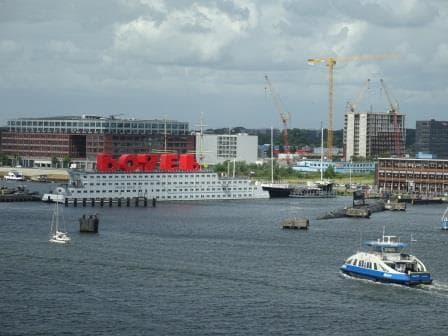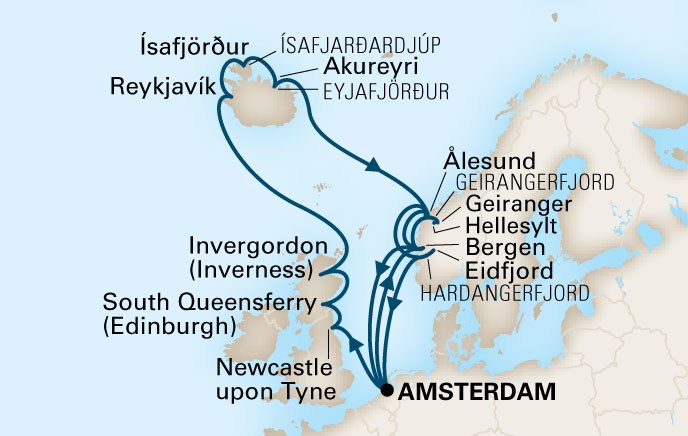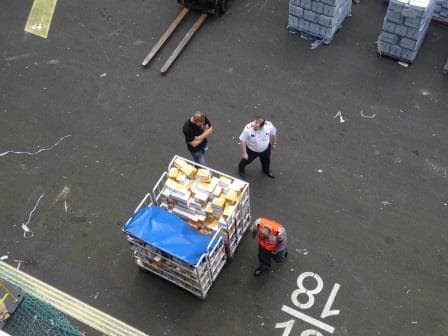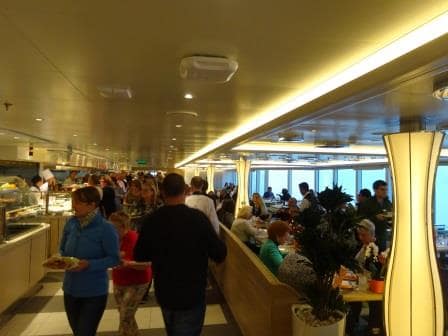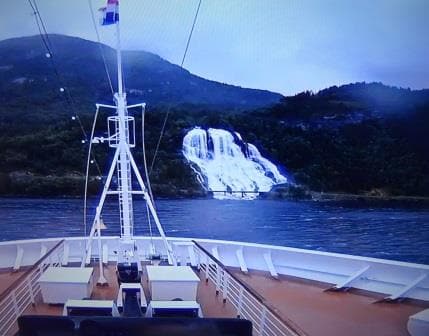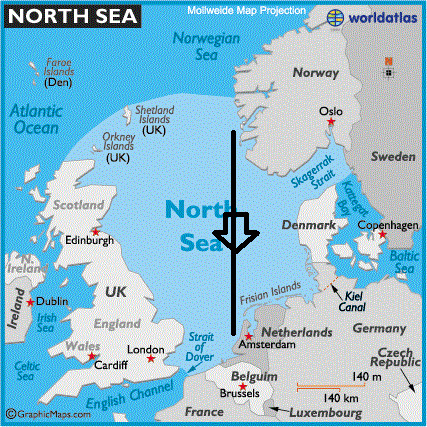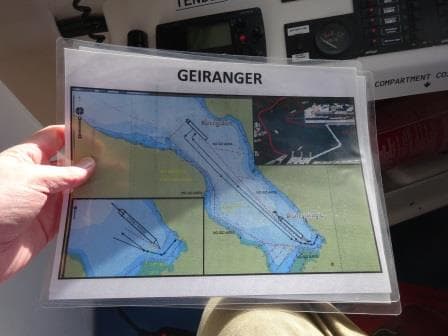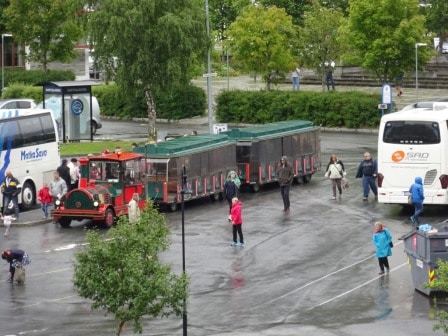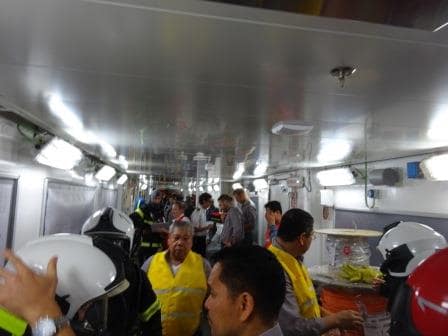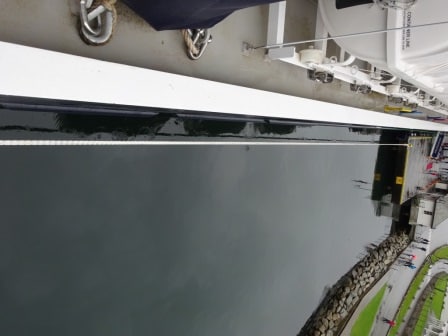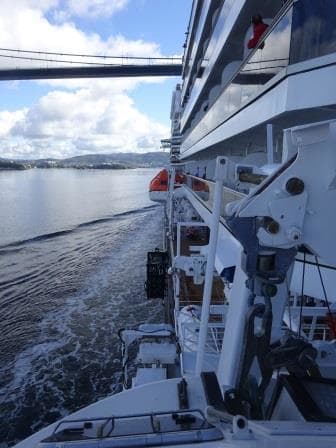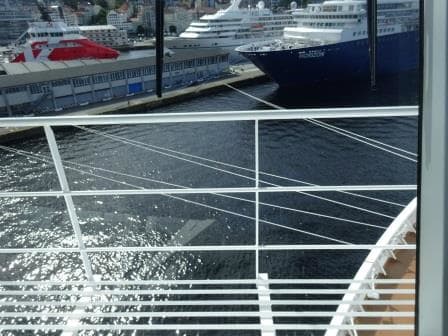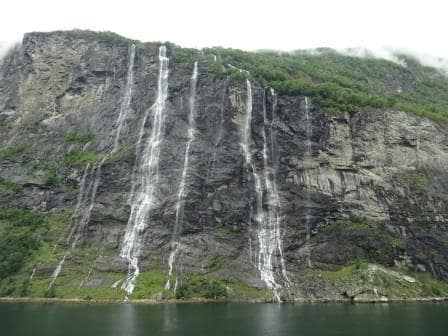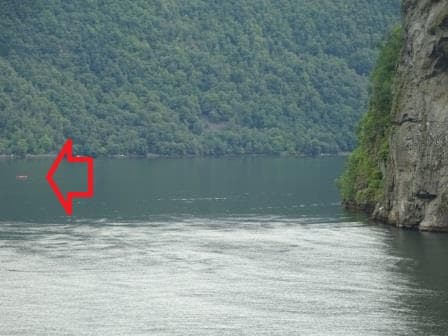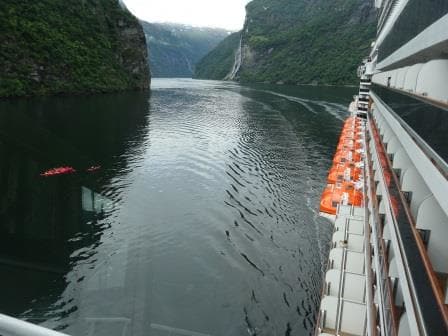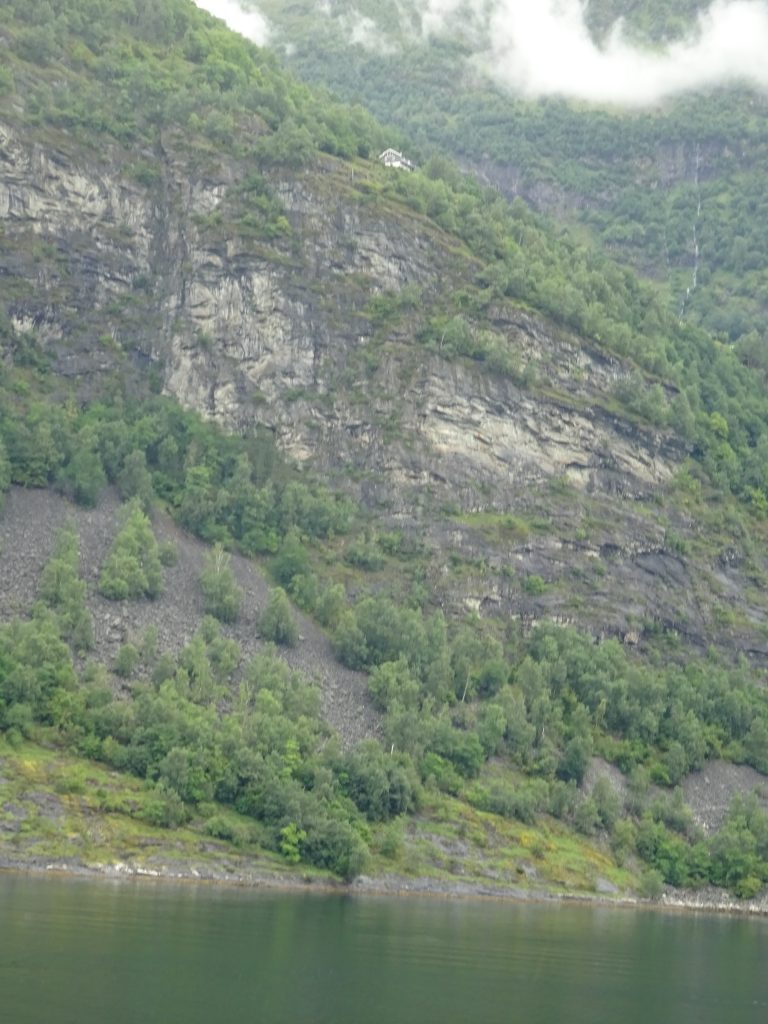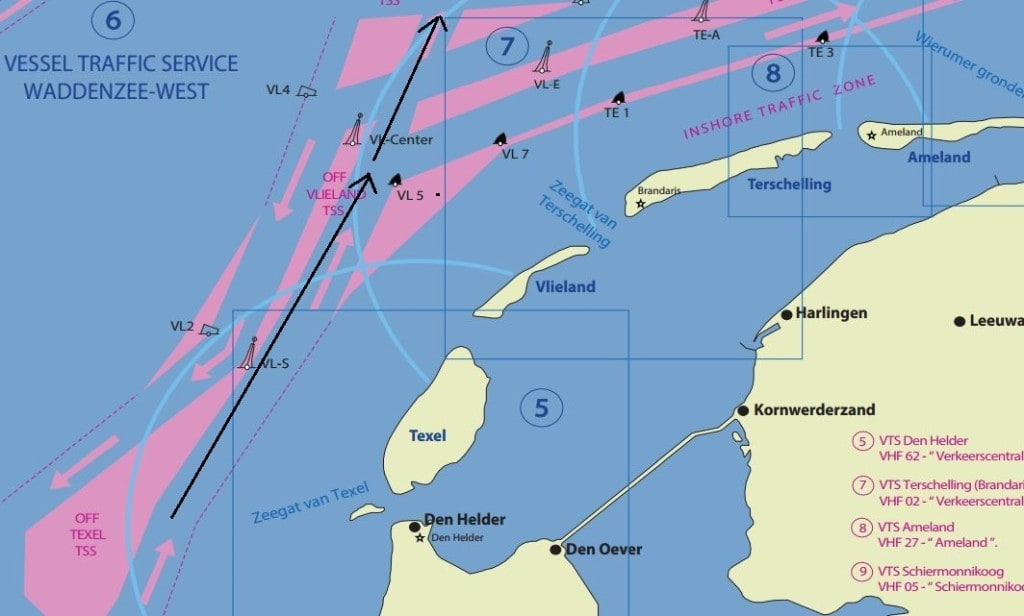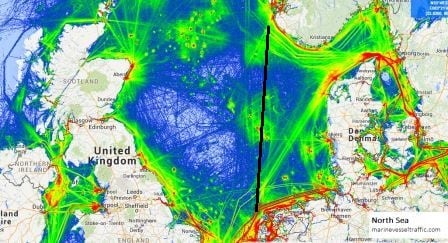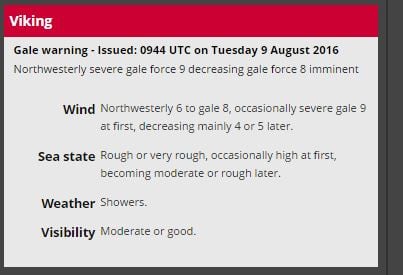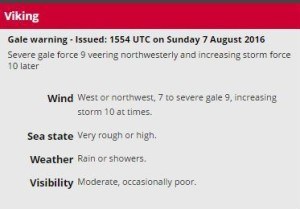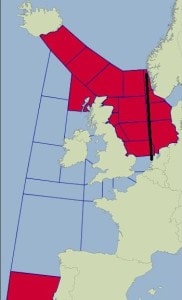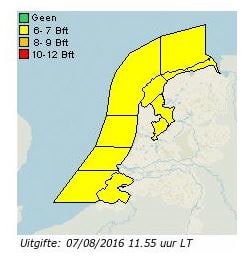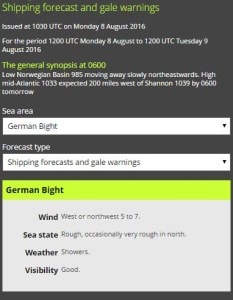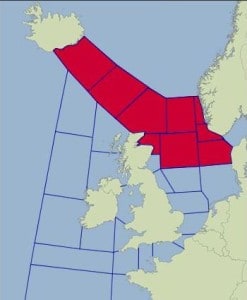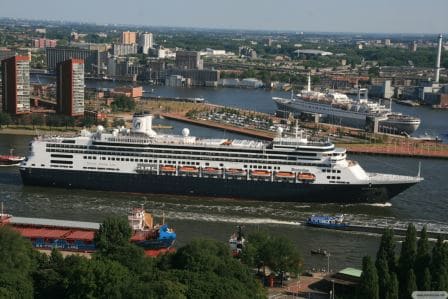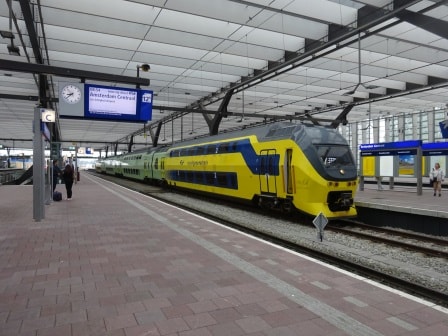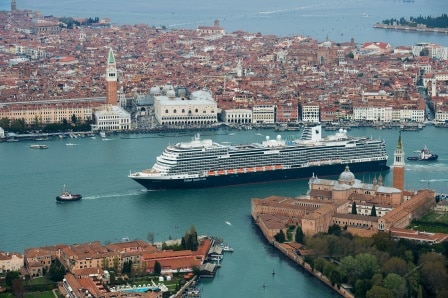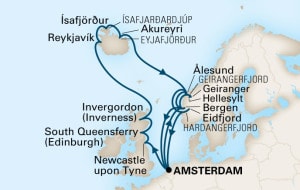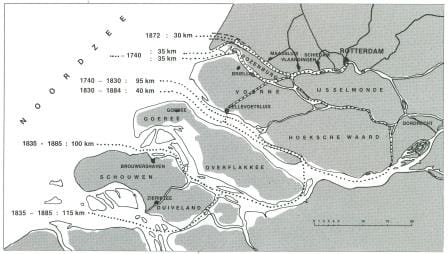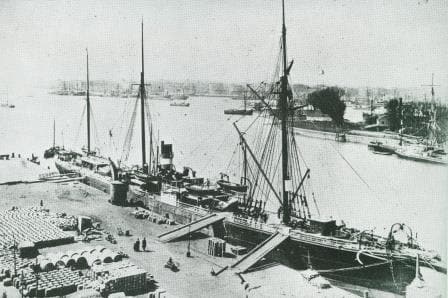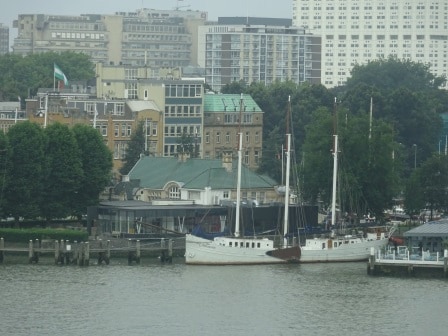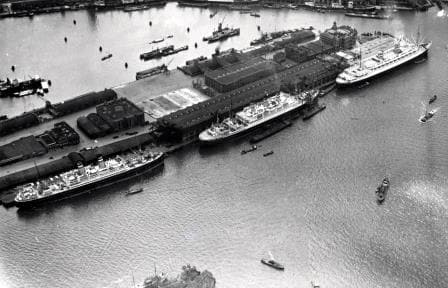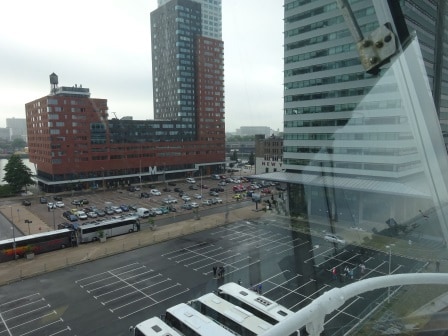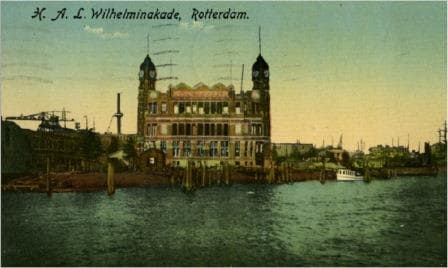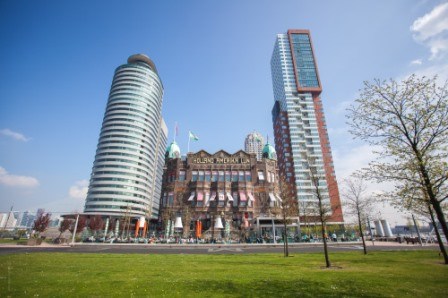Ships as the Koningsdam are too big for the North Sea Canal to fit in sideways. To still make it possible for large cruise ships to visit Amsterdam part of the canal was to be widened to create a turning basin. This give the peculiar situation that a ship first has to go up the canal for about a mile in order to be able to go down the canal back to sea. In the old days only small ships and river barges could go beyond the location of the cruise terminal but then in 2009 the area was dredged out to 32 feet (10.5 meters) and a basin was created of 375 meters which gives the Koningsdam ample room to swing around.
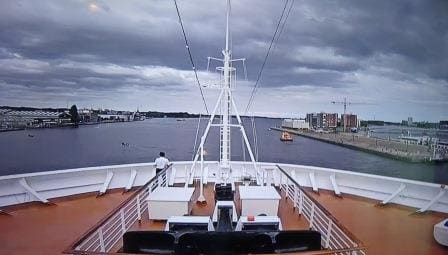
Approaching the Turning Basib, The yellow boat is an escort vessel from the Amsterdam Port Authority to keep all the six pack navigators out of the way. In the white shirt, is the officer who has a range finder to call out the distances to the shore while swinging.
Once lined up, you sail past Central Station for the most scenic part of the canal trip. Here you can see the west part of the old town, a lot of new apartment buildings and a large part of the port of Amsterdam. The area around the Cruise terminal was where once the Passenger ships docked which were connecting the Dutch Empire to the West and East Dutch Indies. But that land is now all taken over for housing. Also on the Northside the industry is slowly moved out of the city and replaced with more housing. There is still one ship (repair) yard there and next to it a sort of impromptu shipping museum with a Russian submarine, a yellow submarine and a lot of locations for partying and modern art. Very conspicuous is a white structure which looks like a hotel. And it is, but as it is sitting on a barge it is called a Botel.
It takes roughly 2 hours from the terminal to Ijmuiden locks but the transit time depends on the traffic and if the Lock master has the gates open. The Ijmuiden locks are there to keep the water level on the North Sea Canal (which changes at Amsterdam in the Amsterdam – Rijn Canal) constant all the way up to the river Rhine itself. Tidal differences are normally about 3 to 4 feet (1. 20 Meter) but when calculated right a ship could sail directly through the locks when the water levels are level which they normally are 4 times a day. Still the locks are used to stop the inflow of salt water as much as possible.
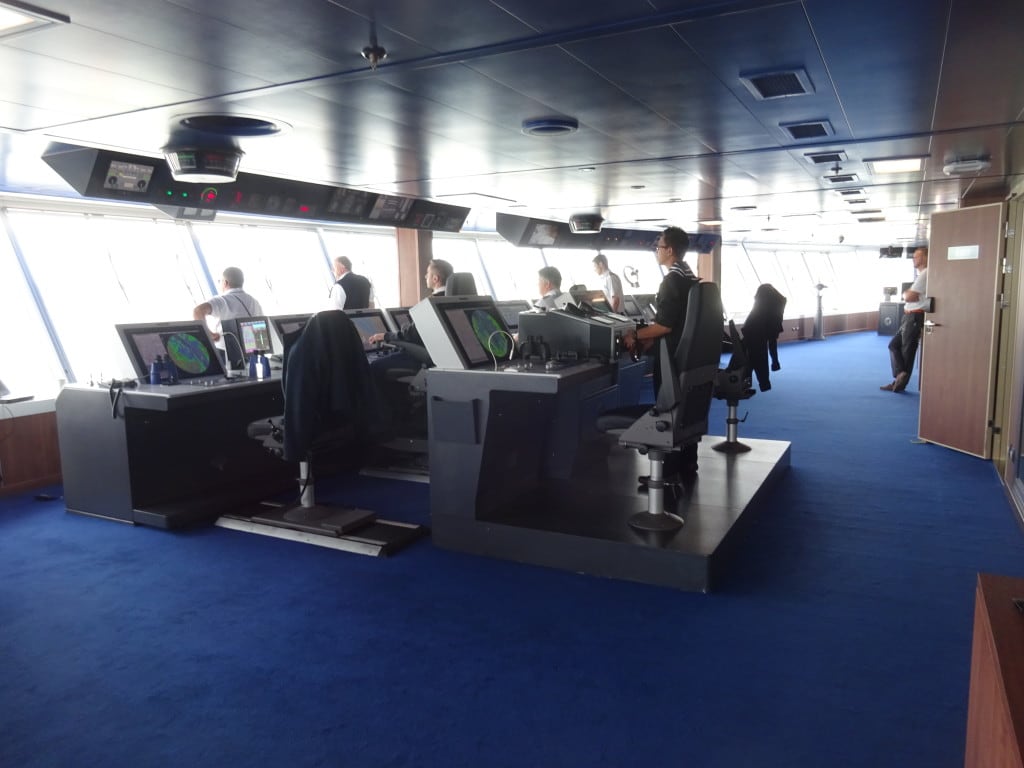
The bridge team in action. Helmsman, Captain Navigator, Co Navigator and two pilots in the front. We have two pilots due to the width of the ship.
Today the Koningsdam will spend the day in the North Sea. If we would have put the Pedal to the Metal we could have reached Newcastle in the early afternoon but as this is a 14 day cruise, we start it in a decent way and spend the first day at sea. So the ship is making a nice wide turn over the North Sea and will line up for 0600 pilot at Newcastle tomorrow morning.
There is another good reason for a day at sea and that is to make time for Immigration. The United Kingdom is only partly part of the European Community (and two years from now completely out of it due to the Brexit vote) and has its own immigration rules. They include a face to face inspection of everybody on board, including myself who lives in England. With over 2600 guests on board that would take a very long time to do when coming off the ship. And thus the UK Border Agency was willing enough to send 5 Inspectors to Amsterdam and sail with us and do the inspection on board. So in the course of the morning everybody had their face compared with the picture in their passport. A bit of an exercise but it will help enormously with speeding things up on arrival.
By the time they were out of the Showroom at Sea which is called the World Stage on the Koningsdam, the Show Cast of the ship moved in as we are in the process of changing the shows. The old cast who have been on board since the shipyard will be going home and a new group has arrived and are now rehearsing. They bring with them a complete new set of shows which are being phased in one by one. To get the routine going with the size of the stage it takes a lot of rehearsing and thus at noon time the doors to the World Stage closed and rehearsals started again. I poked my nose in yesterday and it is looked very impressive of what is going to be put on the stage now. The stage which we have, and which is unique in the fleet, makes it possible to create a show with very unusual viewing angles as it is round and gives a totally different perspective.
Tomorrow we are in Newcastle upon Tyne and the weather looks good, partly cloudy 68oF / 20oC with a gentle breeze on arrival.
